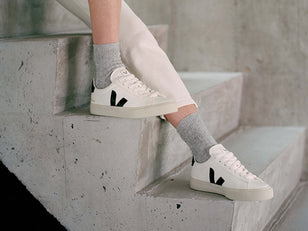According to adidas, innovation never sleeps, a belief it demonstrates with every new collection. With a clientele ranging from Olympians to celebrities and avid sports enthusiasts, adidas continues to amass a loyal following drawn to the brand for its cutting-edge technology and iconic design.
Our adidas women's collection includes all of your favourite three-stripe designs, including
supportive sports bras,
adidas UltraBoost for women and the
womens adidas leggings range to name just a few.
Since its quiet start in the kitchen of Adi Dassler’s mother’s home in 1924, adidas has rocketed out of small-town Bavaria to provide men and women worldwide with inspirational sportswear like the famous three-striped
adidas womens tights.
On a mission to better the professional athletes of his generation, Adi would meet with the sports stars to understand their needs, creating new offerings with greater impact.
Today, its founder's entrepreneurial spirit lives on, as adidas continues to break ground and create never-before-seen fabrics and technology that ups the ante in the
gym and beyond. So don’t take to long before you grab your own pair of
womens adidas leggings.
